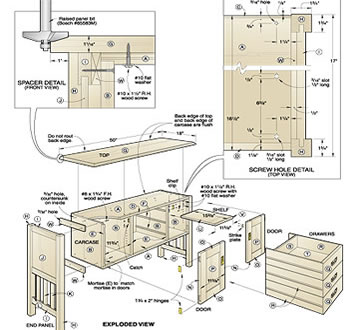Best selling wood projects - Recycling packaging timber into kitchen utensils

Best selling wood projects
Timber is being used to freight goods all over the world every day. As packing cases, crates, dunnage, and other forms of packaging. Viewed as low value timber, some if it is just that - but some of it is absolutely beautiful stuff just waiting to be utilsed and given a higher value life. When I am teaching woodworking hand skills, one of the first projects we do is to make kitchen chopping boards, often from this material. I do a lot of work with recycled and salvaged timber. Part of what I also hope to do is to help people understand our incredible wastage as we dump so much timber into landfill. Nice wide pieces of packing crates offer wonderful opportunities to use sawing and planingskill to create beautiful and functional items. Why not?
????


ISPM 15 is the International Standards for Phytosanitary Measures Publication No. 15 (2009): Regulation of Wood Packaging Material in International Trade.
The United Nations Food & Agriculture Organisation (FAO) addresses plant quarantine through the International Plant Protection Convention (IPPC). The IPPC is an international treaty administered by the FAO and implemented through the cooperation of member governments. Australia is a member or contracting party to the treaty.

An ISPM 15 compliant mark looks like this:

What the IPPC certification symbol means:
- XX: represents the two letter ISO country code (e.g. AU for Australia, US for United States, NZ for New Zealand, GB for United Kingdom).
- 000: represents the unique certification number issued by AQIS to the treatment provider or wood packaging manufacturer. Inclusion of this certification number ensures that the wood packaging material can be traced back to the treatment provider and/or manufacturer.
- YY: is the treatment abbreviation where:
- - HT is the code for heat treatment to a minimum of 56o C for a minimum of 30 minutes
- - MB is the code for methyl bromide fumigation.
More of this info can be obtained from the following website:
http://www.daff.gov.au/aqis/import/timber/ispm-15-faq#What

Methyl bromide is the most potent ozone depleting substance still in use today. In 1991 it was identified internationally as a chemical which contributes to the depletion of the ozone layer. Accordingly, the Australian manufacture and importation of methyl bromide was to have been phased out completely by 1 January 2005. However, the uses of methyl bromide in quarantine pre-shipment (QPS) and as a chemical feedstock are currently exempt from the phase-out. Hence it continues to be used in many places around the world as a fumigation method for timber packaging and dunnage, and is an approved treatement under ISPM 15. (except in the EU now?)
If the timber from packaging has been heat treated, then I generally reckon it is OK for recycling as kitchen chopping boards, cooking spatulas, chop sticks, bowls, and wooden spoons.. If it has been treated with methyl bromide, then I will not use it for food purposes. However I will use it for furniture and other wooden items. Incidentally, man-made wood derived materials, like plywoods, particle boards, MDF etc (which were bonded together using heat, pressure and glues) are not required to bear an ISPM 15 mark. The manufacturing process kills off any fungicides, insects or other nasties which may have been harboured in the raw materials prior to manufacture.
So next time you are pulling apart a pallet or crate to utilise that wonderful resource of timber or sheet material, keep an eye out for the ISPM mark. Now you will know what it means, and know a bit more of its story. I hope that this info has been helpful to those who wonder about recycled wood.
??

Most of the chopping boards made by this group were made from packaging.
Sometimes a real gem turns up in the packaging pile. I am no expert on North American timbers, but I believe the stick in the picture below is American White Oak. The ISBM 15 Compliance Mark stamped on it tells me me its from the USA and it was Heat Treated. Delicious.
????
????So next time you see a pallet or crate in the skip bin or on the rubbish tip, have a close look at it. There is a chance you may need to liberate it into its next life as a kitchen utensil... If it is an exotic piece of timber, look for the ISPM 15 Compliance Mark. If you can find one, it offers both useful information and intrigue!
 |
| What a score! A piece of American White Oak, 8"x1" x 6 long. (200 x 38 x 1850mm) |
Best selling wood projects
Best selling wood projects - Recycling packaging timber into kitchen
utensils
 Reviewed by teres
on
04.49
Rating:
Reviewed by teres
on
04.49
Rating:
 Reviewed by teres
on
04.49
Rating:
Reviewed by teres
on
04.49
Rating:

Tidak ada komentar: